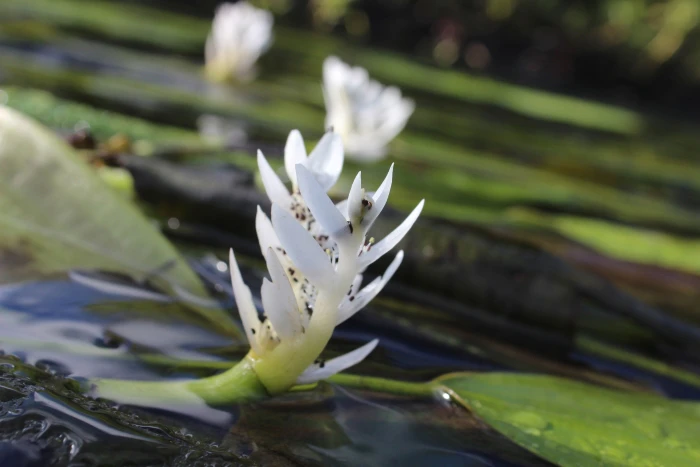Waterblommetjie
(Aponogeton distachyos)
Waterblommetjie (Aponogeton distachyos)
/
/

Joe Dillon
CC BY 4.0
Image By:
Joe Dillon
Recorded By:
Copyright:
CC BY 4.0
Copyright Notice:
Photo by: Joe Dillon | License Type: CC BY 4.0 | License URL: http://creativecommons.org/licenses/by/4.0/ | Rights Holder: Joe Dillon | Publisher: iNaturalist | Date Created: 2022-06-26T10:58:30-07:00 |

























Estimated Native Range
Climate Requirements for Jinan, China
| This Plant | Your Site | Plant Suitability for Your Location | ||
|---|---|---|---|---|
| • Precipitation | 8" - 123" | 30" | Your precipitation may be insufficient for this plant. Irrigate N" / year. | Irrigate N" / year |
| • High Temp. | 58°F - 98°F | 89°F | Your summer temperatures are normal for this plant. | Excellent |
| • Low Temp. | 14°F - 50°F | 22°F | Your winter temperatures are normal for this plant | Excellent |
This plant should grow well at your location with about N inches per year (Y minutes per month) of irrigation.
Summary
Aponogeton distachyos, commonly known as waterblommetjie, Cape-pondweed, or water hawthorn, is an aquatic perennial herb native to the still waters of ponds, vleis, and marshes in South Africa’s Western Cape and Mpumalanga provinces. It is adapted to a seasonal climate where water bodies dry up in summer and refill with the autumn rains. The plant features floating, oval-shaped leaves and produces sweetly scented white flowers with a brush of purple that are held above the water surface from late winter to spring, providing an attractive display.
Waterblommetjie is valued for its ornamental flowers and is often used in water gardens and ponds. It is also a traditional culinary ingredient in South African cuisine, where the flower buds are used in a stew known as waterblommetjiebredie. In cultivation, it requires standing water or wet mud to thrive and prefers full sun to part shade. While generally low maintenance, it can become invasive outside its native range due to its rapid growth and ability to spread. Gardeners should ensure it is not a prohibited or invasive species before planting.CC BY-SA 4.0
Waterblommetjie is valued for its ornamental flowers and is often used in water gardens and ponds. It is also a traditional culinary ingredient in South African cuisine, where the flower buds are used in a stew known as waterblommetjiebredie. In cultivation, it requires standing water or wet mud to thrive and prefers full sun to part shade. While generally low maintenance, it can become invasive outside its native range due to its rapid growth and ability to spread. Gardeners should ensure it is not a prohibited or invasive species before planting.CC BY-SA 4.0
Plant Description
- Plant Type: Herb
- Height: 0.25-0.3 feet
- Width: 1-3 feet
- Growth Rate: Moderate
- Flower Color: White
- Flowering Season: Spring, Fall
- Leaf Retention: Deciduous
Growth Requirements
- Sun: Full Sun, Part Shade
- Water: Aquatic
- Drainage: Standing
Common Uses
Fragrant, Low Maintenance, Water Garden
Natural Habitat
Still waters of ponds, vleis, and marshes in South Africa’s Western Cape and Mpumalanga provinces
Other Names
Common Names: Water Hawthorn, Two-Flowered Pondweed, Cape Pondweed, Cape-Asparagus, Cape-Hawthorn, Riverine-Weed
Scientific Names: Aponogeton distachyos, Aponogeton distachyos var. lagrangei, Aponogeton distachyus
GBIF Accepted Name: Aponogeton distachyos